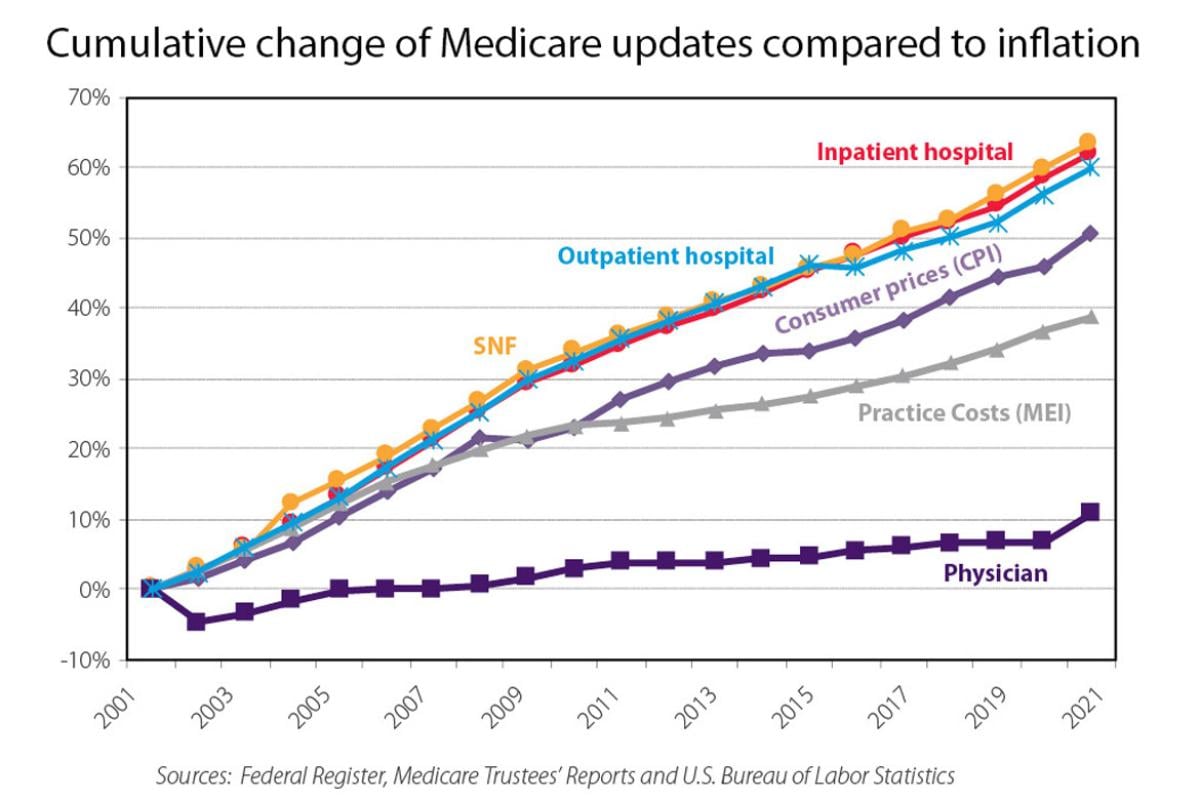AMA federal advocacy is having a positive impact on efforts to halt scheduled cuts to Medicare physician pay rates while charting a course for payment reform, fixing the insurer prior-authorization process, and keeping flexible telehealth policies in place after the COVID-19 public health emergency ends.
All three of these issues are part of the AMA Recovery Plan for America’s Physicians. Jason Marino, the AMA's director of congressional affairs, detailed the latest developments and outlined next steps in a recent episode of “AMA Update.”
Medicare physician payment
The AMA strongly supports H.R. 8800, the “Supporting Medicare Providers Act of 2022.” The bipartisan legislation aims to stop the scheduled 4.42% cuts to the Medicare physician pay rate and was introduced by Reps. Ami Bera, MD, a Democrat from California, and Larry Bucshon, MD, an Indiana Republican.
The AMA is working to add to the bill’s growing list of co-sponsors and to get a companion bill introduced in the Senate.
“We already have 19 people that have committed to us,” Marino said. “So it's growing.”
While it’s unrealistic to think comprehensive payment reform will occur this year, Marino said the strategy is to first stop the scheduled cuts now and then, next year, start the process for comprehensive reform.
The AMA has been speaking with members of Congress and showing them how Medicare pay rates for hospitals and other health care providers have been generally kept up or exceeded the rate of inflation,
But physician payment rates, when adjusted for inflation, have fallen 22% between 2001 and 2021, according to an AMA analysis of Medicare trustees’ data.
“It's been a tough 21 years for physicians,” Marino said, adding that these cuts would be coupled with rising practice costs and an inflation rate of more than 8%.
Bipartisan effort to fix prior auth
Momentum to fix prior authorization is building on Capitol Hill. This was made clear when a bipartisan bill to reform prior authorization for Medicare Advantage plans, H.R. 3173, the “Improving Seniors' Access to Care Act” (PDF), passed via unanimous voice vote.
“These are contentious times, but here you are—a health care bill that passed by a voice vote,” Marino said. “That tells you how ... much people care about this issue.”
Sponsored by Rep. Suzan DelBene, D-Wash., the bill collected 326 co-sponsors in the House.
A companion bill sponsored by Sens. Roger Marshall, MD, a Kansas Republican, and Krysten Sinema, a Democrat from Arizona, has been introduced and already has a roster of 43 co-sponsors.
Marino is hopeful the bill will be passed in the Senate during the post-election “lame-duck” session and the spirit of reform will spread beyond Medicare Advantage.
“Once you retool the prior-authorization processes for Medicare Advantage, it makes sense to do it for your other plans as well,” he said.
Keeping telehealth flexibilities
Just as with the prior authorization-reform legislation, a bill to extend the flexibilities for telehealth beyond the COVID-19 public health emergency was passed by the House of Representatives with overwhelming support and the AMA is targeting the lame-duck session for passage in the Senate.
The “Advancing Telehealth Beyond Covid-19 Act” calls for extending desired telehealth flexibilities at least until Dec. 31, 2024. It passed the House by a 416–12 vote.
“Everyone wanted to be part of this,” Marino said. “It showed momentum and clear will, and now we're trying to get some momentum in the Senate.”
The regulations dictating telehealth, which were written before the public’s widespread adoption of smart phones, restricted telehealth use to remote areas and limited payment for services. The waivers instituted during the pandemic lifted the site restrictions and allowed payment for many more services—including telephone, or “audio-only,” visits.
“We're saying get rid of this originating site [regulation]—you can do telehealth from your car, from your home, from the library, from your work,” Marino said. “We also don't want a bunch of arbitrary restrictions on what's covered that don't exist for in-person visits.”
If physicians know that the old restrictions will be lifted, they are more likely to invest in the technology—which, in turn, will lead to more innovation, Marino explained.
”The patients like it, physicians like it, it's working,” he added.
“AMA Update” covers health care topics affecting the lives of physicians and patients. Hear from physicians and experts on public health, advocacy issues, scope of practice and more—because who’s doing the talking matters. You can catch every episode by subscribing to the AMA’s YouTube channel or the audio-only podcast version, which also features educational presentations and in-depth discussions.




